26 Tantalizing Signature East Asian Egg Dishes
East Asian egg dishes represent a culinary symphony of flavor, technique, and cultural heritage that tantalizes taste buds across diverse regional landscapes.
Delicate preparations transform simple ingredients into extraordinary gastronomic experiences that reflect centuries of culinary wisdom.
Culinary traditions interweave eggs with remarkable creativity, elevating them from basic protein to complex, nuanced delicacies.
Regional cooking methods showcase extraordinary techniques that highlight the versatility and adaptability of eggs in East Asian cuisine.
Remarkable skill and precision characterize these dishes, where chefs manipulate texture, temperature, and seasoning with incredible finesse.
Subtle yet bold flavor profiles emerge through carefully balanced ingredient combinations that celebrate both simplicity and sophistication.
Each preparation tells a unique story of regional identity, familial tradition, and cultural connection.
You are about to uncover 26 remarkable signature East Asian egg dishes that will expand your culinary horizons:
Signature East Asian Egg Dishes Packed with Flavor
Egg dishes across East Asia prove just how versatile a simple ingredient can be. Elegant presentations and inventive flavors share the spotlight.
Ajitsuke Tamago
Japanese ramen's ultimate flavor bomb, ajitsuke tamago elevates any bowl with its silky, umami-rich marinaded eggs that melt in your mouth.
Soft-boiled eggs transform into golden treasures when gently simmered and bathed overnight in a soy-mirin mixture that penetrates their delicate whites.
Careful cooking ensures runny, custardy yolks that contrast beautifully with the seasoned exterior.
Ramen shops across Japan craft these eggs as essential garnishes, carefully timing boiling to achieve perfect texture.
Overnight soaking allows the eggs to absorb deep, salty-sweet nuances from the sauce.
Serious ramen enthusiasts consider these eggs a must-have protein element.
Restaurant and home versions both celebrate this simple yet sophisticated Japanese culinary art.
Chawanmushi
Chawanmushi transforms steamed egg custard into a Japanese culinary treasure that melts in your mouth with complex umami flavors.
Originating in Kyoto and Osaka during the Kansei period, this delicate dish arrives in a small lidded cup featuring a creamy egg mixture infused with dashi stock.
Savory ingredients like mushrooms, tofu, ginkgo nuts, and steamed shrimp elevate each spoonful with rich texture and depth.
Cooks craft the custard by carefully blending eggs with seasoning to create a trembling, translucent base.
Versatile serving options range from hot to cold temperatures, allowing flexible presentation.
Traditional garnishes might include delicate carrot shavings or fresh Japanese parsley.
Soy Egg (Lujidan)
Soy eggs unleash an irresistible Asian flavor bomb through a transformative marinating process that turns ordinary eggs into umami-rich delicacies.
Chinese culinary ingenuity creates these salty-sweet treats by submerging perfectly boiled eggs in a complex sauce mixture.
Soy sauce forms the marinade's foundation, complemented by aromatic ingredients like scallions, ginger, and chili peppers.
Careful timing prevents overpowering flavors during the infusion process.
Marinating requires precision to achieve the ideal color and taste intensity.
Eggs absorb the rich liquid, developing a deep brown exterior and enhanced flavor profile.
Versatile preparation methods allow home cooks to experiment with different spice combinations and marinating techniques.
Tomato And Egg Stir-Fry (Fan Qie Chao Dan)
Scrambled eggs with tomatoes, fan qie chao dan, stands as a quintessential Chinese comfort food celebrated for its simplicity and rich flavor profile.
Originating from home kitchens across China, this quick-to-prepare dish combines fluffy eggs with juicy tomatoes in a savory-sweet harmony.
Stir-frying creates large egg curds that beautifully intermingle with sliced tomatoes, enhanced by a delicate seasoning of salt and sugar.
Potato flour or cornstarch helps thicken the sauce, adding subtle complexity to the dish.
School canteens and family dinner tables frequently feature this beloved recipe, which takes just minutes to prepare.
Chinese home cooks typically serve fan qie chao dan piping hot, making it a go-to meal for quick nourishment.
Modern adaptations continue to celebrate this classic dish's versatile and comforting nature.
Omurice
Omurice blends Japanese comfort food with Western culinary influences, featuring a silky egg omelet enveloping ketchup-seasoned fried rice.
Japanese home cooks pioneered this dish by combining pan-fried chicken and rice with a thin egg wrap.
Ketchup serves as the signature sauce, generously drizzled over the creamy exterior.
Western cooking techniques inspired its creation during Japan's early 20th-century cultural exchanges.
Restaurants and families frequently prepare this budget-friendly meal with simple ingredients like chicken, rice, and eggs.
Variations include topping the omelet with scrambled eggs or replacing ketchup with demi-glace sauce.
Diners enjoy its soft texture and balanced flavor profile.
Omurice remains a beloved staple in Japanese casual dining scenes.
Oyakodon
Oyakodon weaves a poetic culinary story where chicken and egg dance together in a single comforting bowl, symbolizing familial connection through its ingenious Japanese rice preparation.
Simmered chicken nestles atop fluffy white rice, blanketed by silky half-cooked eggs that transform into creamy perfection through residual heat.
Japanese businessmen favor this lightning-fast lunch option, finding solace in its quick preparation and satisfying flavors.
Street vendors and fast-food restaurants across Japan embrace this beloved dish, serving it with chopped scallions that add fresh, sharp notes.
Restaurants specializing in soba frequently feature oyakodon on their menus, highlighting its widespread popularity.
Minimal ingredients create maximum satisfaction, making oyakodon a quintessential comfort meal.
Rich egg sauce and tender chicken meld seamlessly, offering a warm, nostalgic experience in every single bite.
Oyster Omelette (Hao Jian)
Oyster omelette bursts with savory seafood flavors, blending crispy egg batter and plump oysters from coastal Fujian, China.
Hokkien communities across Taiwan, Malaysia, Singapore, Indonesia, and the Philippines cherish this street food staple.
Potato starch creates a unique, slightly chewy texture that complements tender oysters.
Chaozhou culinary traditions inspire its preparation, with chefs often adding spicy chili sauce and lime juice for extra zest.
Tainan city champions this dish, boasting some of the most exceptional versions due to its proximity to fresh oyster beds.
Coastal communities have perfected this simple yet complex dish over generations.
Onsen Tamago
Onsen tamago emerges as a Japanese culinary marvel where eggs transform into silky, creamy delights through precise hot spring immersion.
Gentle temperatures inside natural thermal waters create a unique texture where yolks remain soft and whites become delicately loose.
Japanese cuisine celebrates this technique as a masterful way to elevate simple ingredients into extraordinary experiences.
Diners typically enjoy onsen tamago nestled atop steamed rice, complemented by a drizzle of soy sauce or broth.
Grated daikon provides a crisp contrast to the egg's smooth consistency.
Finely chopped spring onions add a fresh, aromatic garnish that enhances the dish's visual appeal.
Minimalist yet profound, this egg preparation reflects Japan's elegant culinary philosophy of transforming basic ingredients into sublime creations.
Tamagoyaki
Tamagoyaki rolls Japanese eggs into a perfectly layered, slightly sweet omelet crafted through a meticulous folding technique that transforms simple ingredients into a culinary art form.
Originating in the 1950s, this protein-rich dish emerged when Japanese government initiatives encouraged increased egg consumption among children.
Farmers began raising more chickens, sparking widespread popularity for this compact meal.
Carefully seasoned with sugar, mirin, and soy sauce, the omelet develops a delicate balance of savory and sweet flavors.
Skilled cooks create multiple thin layers by gently rolling the egg in a rectangular pan, producing a smooth, compact texture.
Bento boxes frequently feature this iconic Japanese dish as a centerpiece.
Restaurants and home cooks continue to celebrate tamagoyaki as a simple yet elegant egg preparation that reflects Japanese culinary precision.
Tea Egg (Chayedan)
Marbled with intricate, spider-web-like cracks, tea eggs emerge as a stunning Chinese street snack boasting complex flavor profiles from simmering eggs in black tea, soy sauce, and aromatic spices like anise, cinnamon, and peppercorns.
Originating in Zhejiang province, these eggs transform simple hard-boiled protein into a savory delicacy with rich brown-tinged shells revealing beautiful crackled patterns.
Street vendors and markets across China frequently sell these spice-infused eggs as quick, affordable snacks.
During Chinese New Year, families eagerly consume tea eggs as symbolic tokens of wealth and prosperity.
Fragrant spices seep through carefully cracked shells, creating multilayered taste experiences.
Each egg absorbs intense seasonings during slow simmering, developing deep, complex flavors.
Restaurants and home cooks often serve these eggs alongside noodles or rice.
Rolled Omelet (Gyeran Mari)
Gyeran mari, a beloved South Korean rolled omelet, transforms simple eggs into a flavor-packed culinary delight with its stunning spiral design and versatile ingredients.
Chefs craft this dish by gently beating eggs and adding colorful mix-ins like scallions, carrots, peppers, mushrooms, zucchini, cheese, ham, bacon, or nori seaweed.
Each carefully rolled layer creates a visually appealing and tasty presentation that starts flat in the pan and ends as a beautiful spiral.
Korean home cooks often prepare this dish as a quick breakfast, side dish, or snack that appeals to all ages.
Restaurants and street vendors frequently feature gyeran mari as a popular comfort food that satisfies hunger with minimal effort.
Precise pan movements and gentle rolling create the signature cylindrical shape that makes this omelet unique.
Steamed Egg (Gyeran Jjim)
Silky and cloud-like, gyeran jjim emerges as South Korea's beloved steamed egg custard that melts in your mouth with delicate richness.
Korean home cooks craft this smooth dish by whisking eggs with water and umami-packed ingredients like anchovy stock or shrimp broth.
Scallions and fish sauce add subtle depth to the creamy texture, creating a comforting side dish served in traditional earthenware vessels or modern ramekins.
Small bubbles form a soft surface during steaming, transforming simple eggs into a luxurious experience.
Restaurants include gyeran jjim as a classic banchan alongside main courses, highlighting its versatility.
Restaurants across Seoul often prepare this dish with regional variations, showcasing subtle flavor differences.
Koreans enjoy gyeran jjim as a quick snack or complementary course, celebrating its simplicity and elegance.
Egg Drop Soup (Dan Hua Tang)
Hot chicken broth transforms whisked eggs into delicate, flower-like clusters in egg drop soup, a beloved Chinese culinary staple that dances between simplicity and sophistication.
Restaurants worldwide serve this silky soup as a popular appetizer, particularly in southern China and American-Chinese cuisine.
Scallions and sesame oil enhance its light, comforting flavor profile while adding depth to the broth.
Chefs often customize the soup by incorporating ingredients like tofu, peas, or tomatoes.
Vegetable broth works equally well for those seeking alternative base options.
Originating in traditional Chinese kitchens, the soup showcases the elegant technique of creating soft egg ribbons.
Western versions typically differ from authentic recipes by presenting a thicker consistency.
Chinese communities have embraced this quick, nourishing dish as a cherished comfort food across generations.
Tamagodon
Tamagodon bursts with comforting simplicity, featuring a silky egg omelet draped over steamed rice in classic Japanese street-style cuisine.
Japanese home kitchens have perfected this quick one-bowl meal that transforms basic ingredients into a satisfying lunch or dinner.
Mirin, dashi, and soy sauce create a deeply savory sauce that bathes the fluffy eggs, adding rich umami flavor to each bite.
Whisked eggs cook gently until just set, creating a soft golden layer atop perfectly steamed white rice.
Chopped spring onions and crisp nori seaweed provide fresh, contrasting garnishes that elevate the dish's texture and visual appeal.
Restaurants and home cooks typically prepare tamagodon in minutes, making it a go-to meal for busy individuals.
Budget-friendly and deeply satisfying, this humble donburi represents Japanese comfort cooking at its finest.
Egg Foo Young (Fu Rong Dan)
Egg foo young bursts with crispy edges and a savory mix of proteins and vegetables, originating from Cantonese cuisine as a versatile omelet-style dish.
Chinese immigrants popularized this street food in American restaurants during the 1950s, transforming it from a deep-fried pancake to a pan-fried favorite.
Chopped meats like char siu pork, chicken, beef, shrimp, or lobster create rich flavor profiles within the fluffy egg base.
Crunchy vegetables such as bean sprouts, bamboo shoots, and water chestnuts add textural contrast to each bite.
Restaurants typically serve egg foo young smothered in thick brown gravy, enhancing its umami essence.
Tamago Nigiri Sushi
Tamago nigiri sushi stands out as a delicate Japanese masterpiece featuring a perfectly sweet egg omelet draped over seasoned rice.
Japanese culinary experts carefully craft this classic sushi by gently folding eggs with dashi and sugar into a silky, golden layer.
Skilled sushi makers press warm rice into a compact base before topping it with a thin, carefully prepared egg slice.
Each bite delivers a subtle sweetness balanced by the savory rice underneath.
Dashi provides a complex umami undertone that elevates the egg's natural richness.
Originating in Tokyo, this sushi style represents centuries of refined Japanese cooking traditions.
Omusoba
Omusoba erupts with pure comfort, blending Japan's beloved yakisoba noodles inside a silky golden omelet that hugs savory stir-fried ingredients.
Meat, vegetables, and crisp noodles nestle within the fluffy egg blanket, creating a soul-warming meal that dominates street food scenes.
Japanese home cooks typically drizzle the entire dish with sweet-tangy brown sauce reminiscent of Worcestershire.
Street vendors and small restaurants across Japan serve this satisfying meal as a quick, affordable lunch or dinner option.
Warm and filling, omusoba perfectly captures comfort food's essence with its rich, layered flavors.
Diners appreciate the textural contrast between soft eggs and crispy noodles.
Simple ingredients transform into a nostalgic, irresistible dish that feels like a warm embrace.
Century Egg (Pi Dan)
Legendary Chinese century eggs transform ordinary eggs into an extraordinary culinary marvel through a remarkable preservation process that turns duck, quail, or chicken eggs into a dark, gelatinous delicacy.
Salt, clay, and sometimes ash or quicklime create a unique chemical reaction that morphs egg whites into a translucent dark brown or green substance.
Preserved for several weeks to months, these eggs develop an intense, complex flavor profile that surprises first-time tasters.
Creamy yolks shift from yellow to deep green or gray with a rich, cheese-like consistency.
Sulfuric and preserved notes dominate the taste, offering a pungent experience that challenges Western palates.
Shanghai and Guangdong regions particularly prize these eggs as a prized delicacy.
Traditional serving methods include slicing them into thin pieces or mixing them with cold tofu.
Adventurous eaters worldwide now seek out this unique Chinese specialty that bridges ancient preservation techniques with modern gastronomic exploration.
Tenshindon
Tenshindon bursts with Japanese culinary creativity, combining a fluffy crab meat omelet draped over steamed rice and finished with a glossy sauce.
Donburi-style serving highlights the dish's simplicity and flavor intensity.
Japanese chefs carefully layer soft rice as the foundation, topped with a delicate egg blanket studded with fresh crab and occasional vegetables like negi onions and mushrooms.
Traditional sauce components include soy sauce, rice wine, and subtle hints of vinegar and sugar.
Surprisingly, despite its name referencing Tianjin, China, no similar dish exists in Chinese cuisine.
Rice trade connections likely inspired the name's origin.
Surprisingly light yet satisfying, tenshindon represents comfort food at its finest.
Authentic preparation demands precise technique and balanced ingredients.
Ikura Chawanmushi
Ikura chawanmushi elevates Japanese steamed egg custard with bursting salmon roe that transforms the classic dish into a luxurious seafood experience.
Delicate eggs steam into a silky smooth texture that melts in your mouth with gentle warmth.
Dashi and soy sauce infuse deep umami flavors throughout the creamy mixture.
Salmon roe nestled on top adds bright orange pearls that deliver salty marine intensity.
Subtle seasonings complement the rich egg base without overwhelming its soft profile.
Seafood stock enhances the custard's depth and complexity.
Precise preparation requires gentle steaming to maintain the custard's signature gossamer consistency.
Japanese culinary traditions shine through this sophisticated yet simple egg dish that balances texture and taste.
Chhai-Po-Nng
Taiwanese dried radish omelet transforms simple ingredients into a crispy, flavor-packed breakfast sensation that bursts with umami and cultural heritage.
Daikon radishes undergo careful sun-drying, concentrating their savory essence before being chopped and folded into whisked eggs.
Green onions add fresh, sharp notes to the mixture, creating depth and complexity.
Skilled home cooks quickly fry the egg blend in a hot wok, developing golden-brown edges and a slightly crisp texture.
Traditional breakfast tables feature this protein-rich dish alongside steaming rice porridge, making it a comforting morning staple.
Sun-dried radishes, widely available in Asian markets, contribute an intense, concentrated flavor that distinguishes this humble yet remarkable meal.
Taiwanese families have enjoyed this simple yet satisfying omelet for generations, reflecting the cuisine's resourceful and flavorful approach to everyday cooking.
Chouchin Yakitori
Chouchin yakitori stands out as a rare Japanese grilling technique where chicken skewers meet a luscious egg yolk in a playful culinary dance.
Originating from Japan's street food culture, this unique dish challenges traditional yakitori preparation methods.
Diners experience two exciting consumption styles: either dipping grilled meat into the raw yolk or dramatically popping the yolk in their mouth before savoring the skewered chicken.
Skilled grill masters carefully select premium chicken cuts and thread them precisely onto wooden skewers.
Grilling happens over high-heat charcoal, ensuring a crispy exterior while maintaining juicy meat interiors.
Japanese street vendors often showcase this technique during evening markets and festivals.
Restaurants specializing in yakitori pride themselves on mastering this intricate cooking method.
Uni Chawanmushi
Uni chawanmushi blends silky Japanese steamed egg custard with luxurious sea urchin, creating a delicate seafood delicacy that melts in your mouth.
Dashi and soy sauce infuse the eggs with rich umami flavor, transforming a simple custard into an elegant dish.
Seafood stock adds depth to the smooth texture, making each spoonful a sensory experience.
Carefully steamed until perfectly soft, the custard becomes light and cloud-like in consistency.
Sea urchin gonads crown the dish, introducing a briny, creamy element that contrasts with the gentle egg base.
Japanese cuisine celebrates this sophisticated preparation as a prime example of minimalist cooking.
Traditionally served in small ceramic cups, uni chawanmushi offers a refined taste of ocean and earth.
Mentai Tamagoyaki
Mentai tamagoyaki rolls up Japanese culinary tradition with spicy Alaskan pollock roe nestled inside a silky egg blanket.
Mayonnaise and mirin blend into the eggs, creating a creamy texture that elevates this classic dish.
Chefs carefully cook the mixture until it firms, gently rolling the omelet into compact cylinders.
Small sushi-style cuts reveal the vibrant orange-red mentaiko dotting the golden yellow egg surface.
Pollock roe provides a salty, slightly spicy kick that contrasts with the smooth egg base.
Japanese home cooks often serve this dish as a breakfast item or bento box staple.
Salt-cured mentaiko gives the roll its signature umami punch and bright color.
Preserved Radish Omelet (Chai Poh Neng)
Chai poh neng emerges as a Taiwanese street-food staple featuring eggs dramatically transformed by preserved radish's complex flavor profile.
Savory and crispy, this omelet blends sweet and salty preserved radish with fresh eggs and aromatic garlic.
Scallions add a sharp green accent to the dish's golden-brown surface.
Taiwanese street vendors traditionally prepare this quick-cooking delicacy in sizzling hot woks.
Careful preparation involves meticulously washing and drying the preserved radish before mixing with beaten eggs.
Vegetable stock sometimes enhances the omelet's depth of flavor.
Small but mighty, chai poh neng represents a perfect balance of textures and tastes in Taiwanese street cuisine.
Omutako
Omutako blends Japanese and Mexican flavors into a mouthwatering comfort meal that transforms classic omurice with a zesty twist.
Originating in Onna Village's Kijimunarestaurant, this creative dish layers a fluffy omelet over spicy taco-seasoned ground beef and rice.
Japanese cooks ingeniously marry two distinct culinary traditions by wrapping the savory meat and rice in a silky egg blanket.
Taco rice serves as the hearty base, bringing bold Mexican-inspired spices to the plate.
Ground beef gets seasoned with robust taco spices, creating a flavorful foundation.
Restaurants across Okinawa now feature this innovative fusion meal.
Soft eggs envelop the spiced meat and rice in a delicate embrace.
Regional popularity has turned omutako into a beloved street food sensation.
What’s the Difference Between Century Eggs and Salted Eggs in Chinese Cuisine?
Century eggs and salted eggs are two unique preserved egg varieties commonly used in Chinese cooking, but they differ significantly:
The process transforms the yolk into a creamy, dark green or gray texture with a strong, pungent flavor, while the white becomes a translucent, jelly-like amber.
Salted eggs have a firm, bright orange yolk that’s rich and slightly oily, while the white remains salty but firmer than fresh eggs. They offer a milder, saltier taste compared to century eggs.
Both are used in soups, congee, and stir-fries but provide distinct textures and flavors.
Why Do East Asian Egg Dishes Often Include Soy Sauce or Dashi?
Soy sauce and dashi are essential flavor boosters in East Asian egg dishes for a few good reasons:

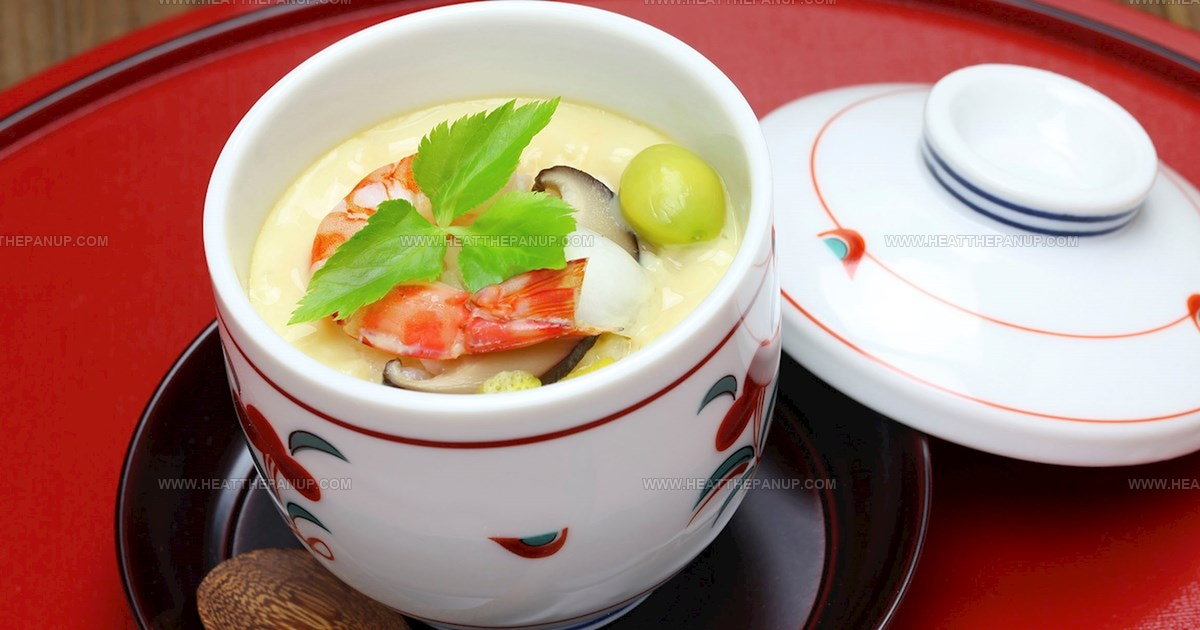
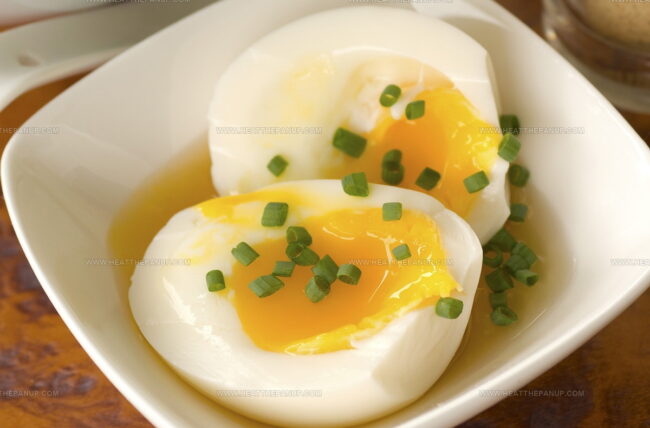
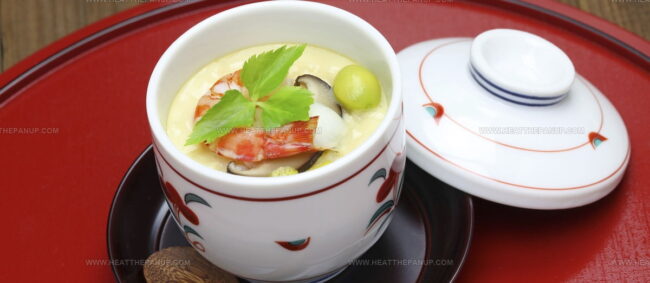
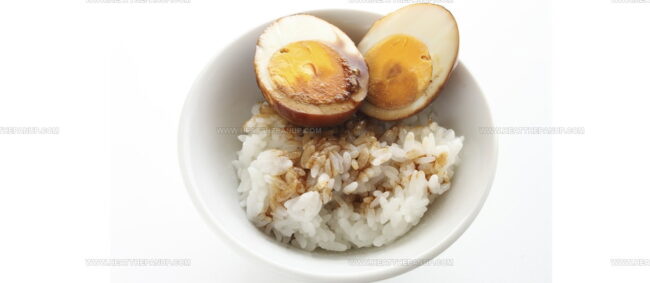
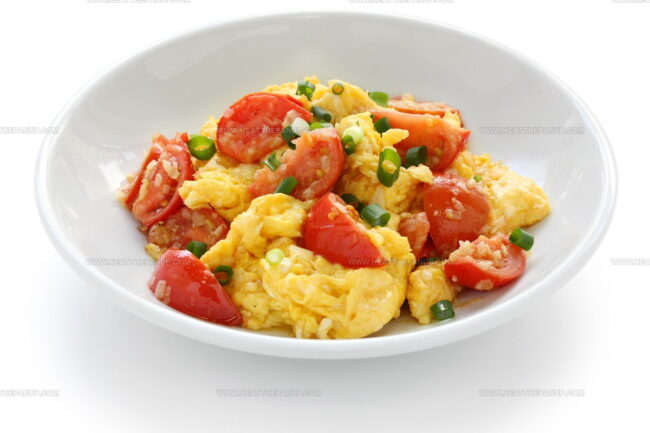

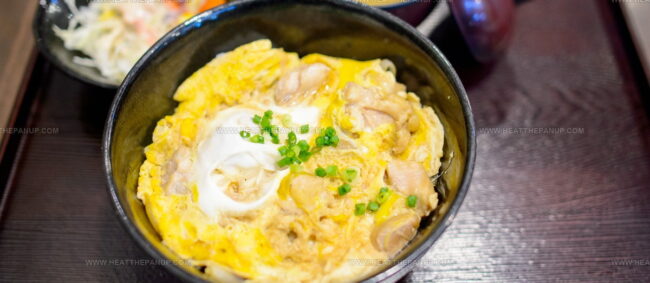
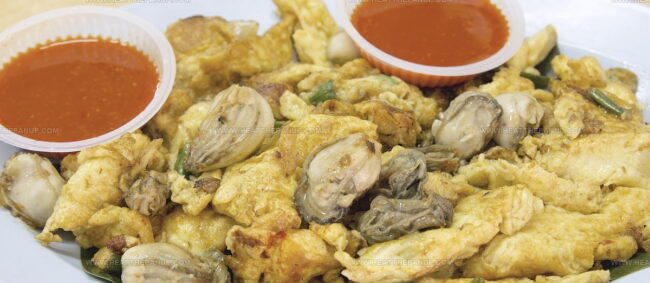
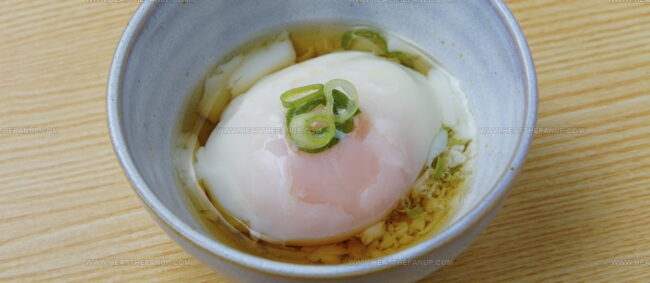
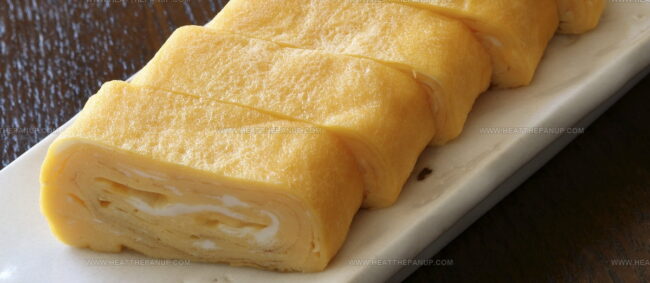
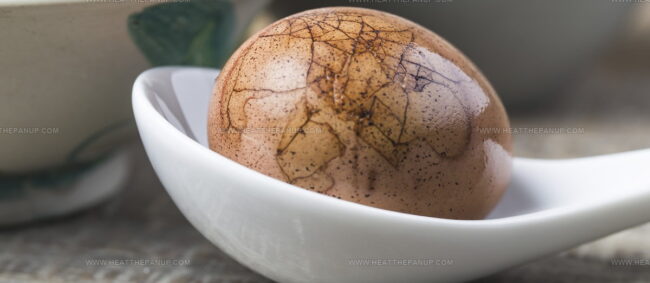
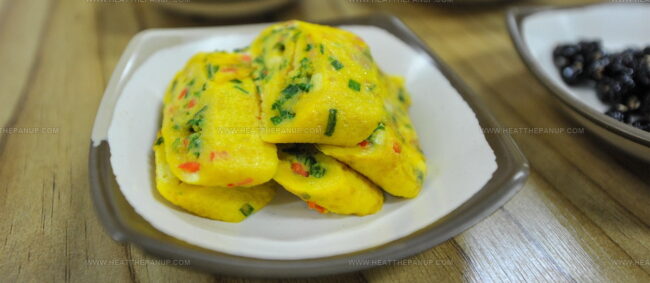
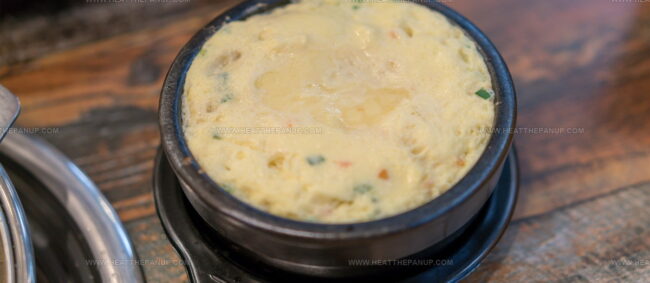
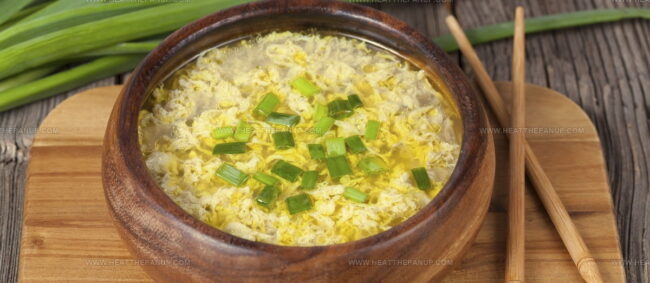
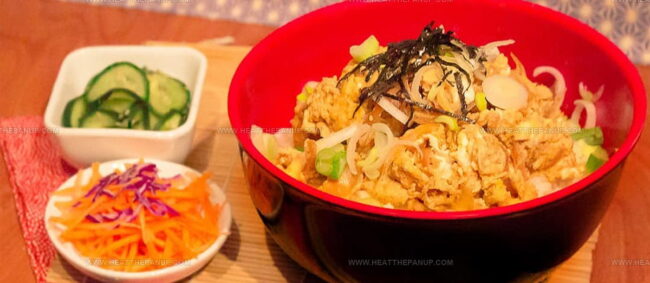
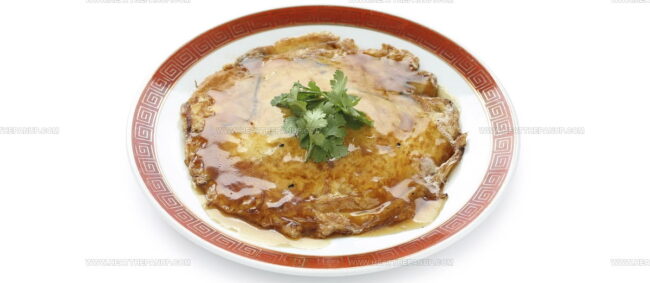
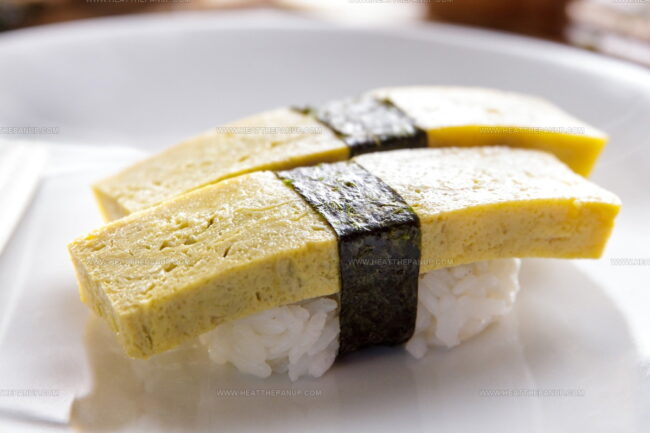
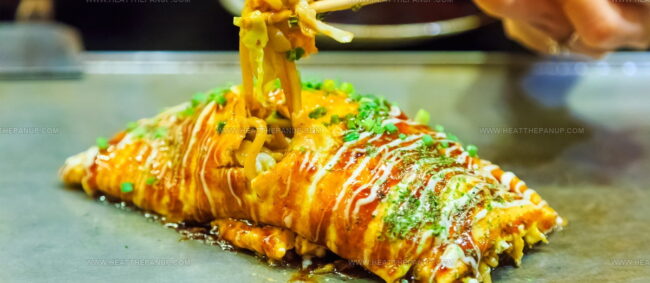
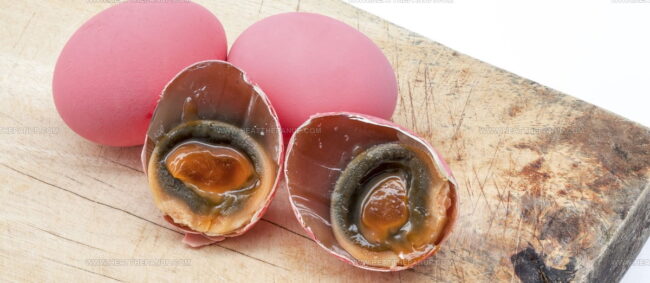
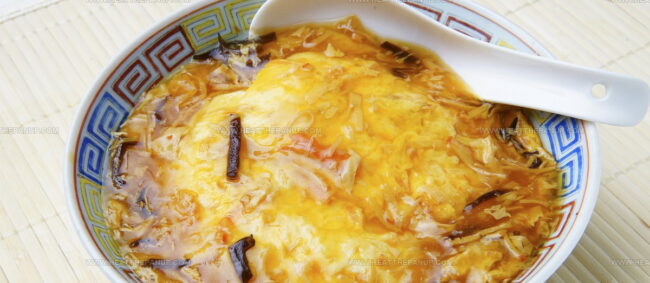
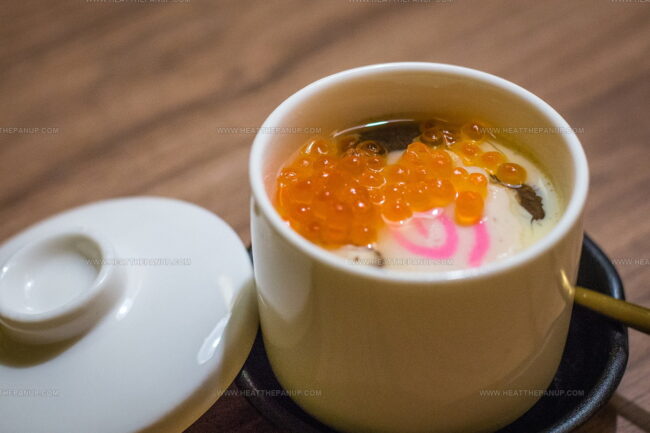
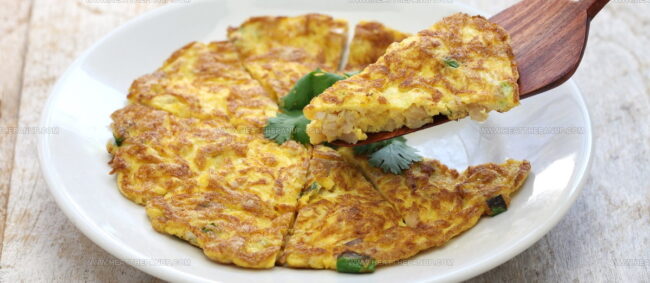
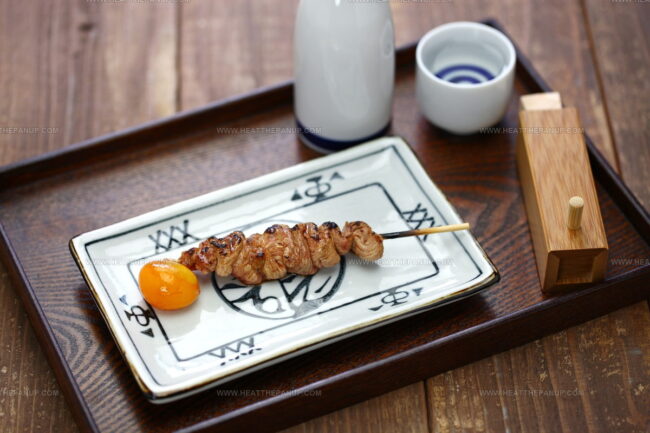
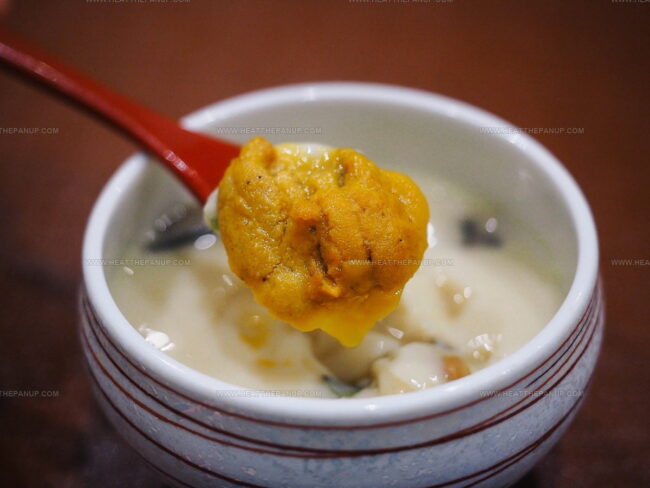
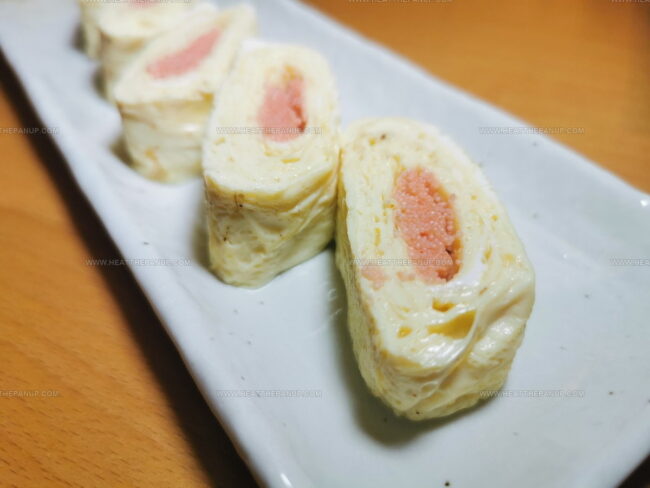
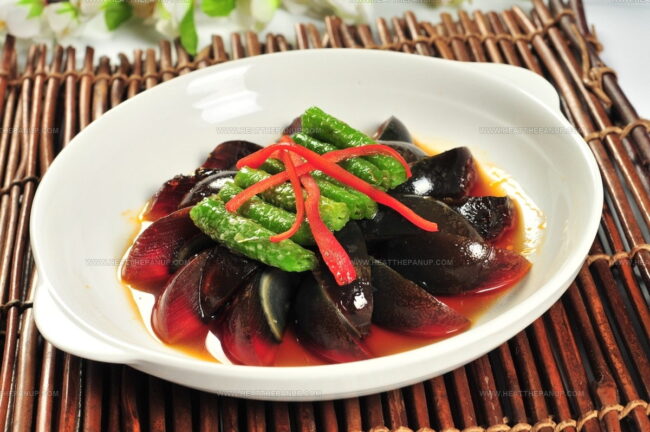
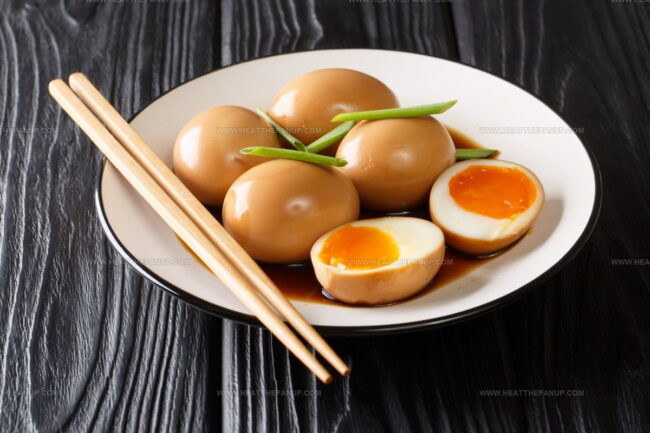
Angelina Wiles
Content Editor & Culinary Enthusiast
Expertise
Food Writing and Editing, Vegetarian and Vegan Cuisine, Baking and Pastry Arts, Sustainable Cooking Practices
Education
Portland Community College
Certificate in Culinary Arts
Focus: Emphasis on sustainable cooking practices, vegetarian cuisine, and food writing.
Oregon Culinary Institute
Diploma in Baking and Pastry Arts
Focus: Specialized training in artisanal baking, pastry techniques, and dessert presentation.
Angelina’s love for cooking started with handwritten family recipes and weekend trips to farmers’ markets around Portland. She followed her passion with a Certificate in Culinary Arts from Portland Community College, then perfected her sweet side with a Diploma in Baking and Pastry Arts at Oregon Culinary Institute.
Angelina believes recipes should feel like a conversation, not a science project. She’s all about helping readers trust themselves in the kitchen with simple steps, fresh ideas, and easy twists on classic meals.
When she’s not editing recipes, she’s baking bread, sipping coffee, or getting inspired by the changing seasons.